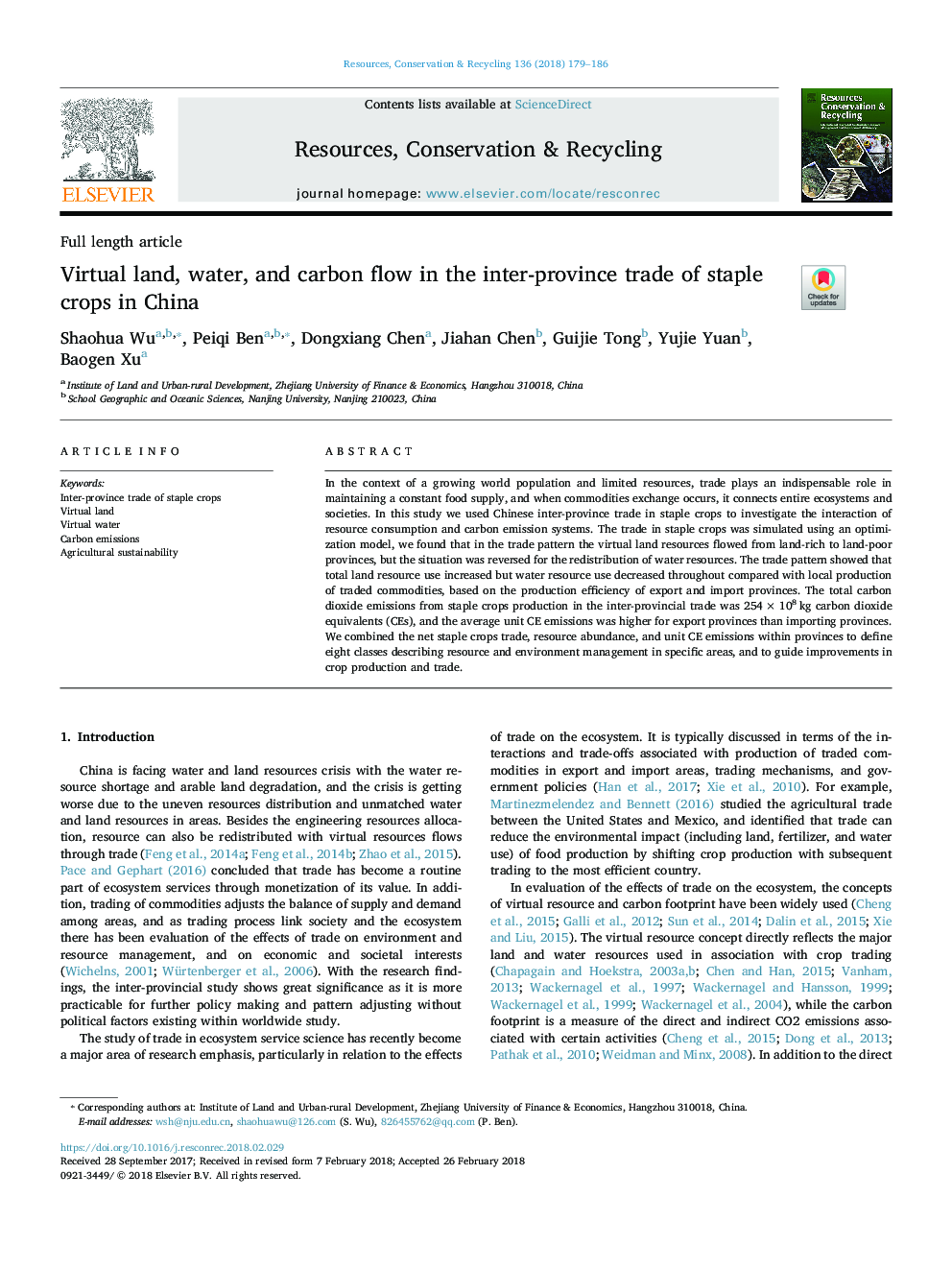| Article ID | Journal | Published Year | Pages | File Type |
|---|---|---|---|---|
| 7494007 | Resources, Conservation and Recycling | 2018 | 8 Pages |
Abstract
In the context of a growing world population and limited resources, trade plays an indispensable role in maintaining a constant food supply, and when commodities exchange occurs, it connects entire ecosystems and societies. In this study we used Chinese inter-province trade in staple crops to investigate the interaction of resource consumption and carbon emission systems. The trade in staple crops was simulated using an optimization model, we found that in the trade pattern the virtual land resources flowed from land-rich to land-poor provinces, but the situation was reversed for the redistribution of water resources. The trade pattern showed that total land resource use increased but water resource use decreased throughout compared with local production of traded commodities, based on the production efficiency of export and import provinces. The total carbon dioxide emissions from staple crops production in the inter-provincial trade was 254â¯Ãâ¯108â¯kg carbon dioxide equivalents (CEs), and the average unit CE emissions was higher for export provinces than importing provinces. We combined the net staple crops trade, resource abundance, and unit CE emissions within provinces to define eight classes describing resource and environment management in specific areas, and to guide improvements in crop production and trade.
Related Topics
Physical Sciences and Engineering
Energy
Renewable Energy, Sustainability and the Environment
Authors
Shaohua Wu, Peiqi Ben, Dongxiang Chen, Jiahan Chen, Guijie Tong, Yujie Yuan, Baogen Xu,
